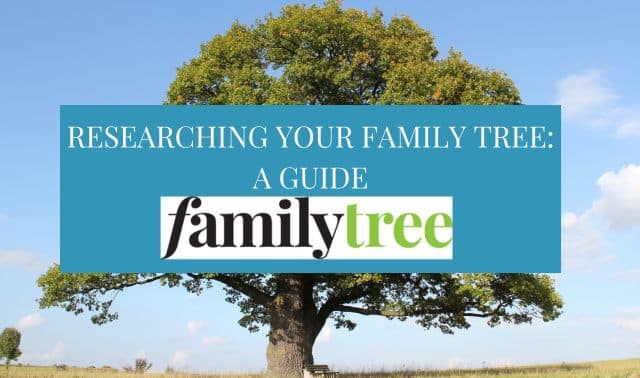Would you like a second citizenship to go along with your ancestry research? While you’re climbing your family tree, you might find some unexpected “fruit”: eligibility for citizenship by descent. This is especially true if you have European ancestry, since many European governments have been liberalizing their ancestral citizenship laws over the past decade.
Americans are taking notice. In a number of European countries, governments are extending citizenship to children and even sometimes grandchildren or great-grandchildren of citizens and former citizens. Such countries include Czechia, Poland, Ireland, Latvia, Italy, Bulgaria, Romania and Slovakia. In some cases, such as Hungary and Croatia, even great-great-grandchildren (and beyond) can qualify for citizenship.
For those who qualify, obtaining a second citizenship (and becoming a dual or “multiple” citizen) can create life-changing opportunities. In my experience as a citizenship lawyer, most people applying for a European citizenship want to:
- live in the European Union part-time
- have a “Plan B” residence option or
- provide an intergenerational mobility asset for their children and future generations
Others might seek dual citizenship simply because they want to feel the ancestral connection that comes with a formal recognition of nationality. All are valid reasons to pursue second citizenship.
In many cases, the process is not necessarily straightforward. But for eligible applicants: Where there’s a will, there’s a way. The good news is that, if you’ve gathered any old birth records, marriage certificates or passenger arrival records, you’re already on your way.
In this article, we’ll discuss some general principles of citizenship by descent, typical issues in proving a case, common misconceptions, and (of course) actionable tips for successfully filing your application.
Finding a Qualifying Ancestor
As a general matter, there are two aspects of citizenship by descent that are the most challenging, and they both come early in the process.
The first is determining whether you even qualify for a citizenship by descent program. This can be harder than it seems. Naturally, start by investigating what countries your ancestors were born in, as well as which countries they were citizens of. (These are often not the same!)
This becomes more difficult the further back in time you’re researching. For example, establishing whether you qualify for Croatian citizenship through your great-grandmother is more difficult than establishing the same through your mother. From the time your great-grandmother was born, Croatian borders and relevant laws may have changed, empires risen and collapsed, and wars raged that may have destroyed records.
All those are factors into whether you will qualify for a foreign citizenship through an ancestor. And the more of these elements, the more complicated your case becomes. As with all legal matters, you might enlist a professional to help you navigate the necessary requirements.
Researching Records
Your next hurdle is getting “the papers”: finding and obtaining the supporting documentation about your qualifying ancestor. This means ordering certified birth certificates online or in person, calling county probate courthouses for a marriage certificate, or ordering ship manifest records from the National Archives and Records Administration (NARA).
The specific documents you need—and how hard it is to get them—will vary based on the country’s requirements and the time, place and number of generations between you and an ancestor. You might want to hire a professional genealogist with expertise in that area or time period, or consult a citizenship lawyer.
Note that you’ll need original or certified copies of official documents. Record images downloaded from genealogy websites like FamilySearch and Ancestry.com, for example, won’t suffice for most applications. Still, those sites can help you identify which records you need official copies of.
This will likely cost money, both in research fees and postage. I recommend ordering three copies of each record for applications: “If there’s a stamp, seal and fee, you should probably order three.”
Overview: The Application Process
Each country’s program has its own process for receiving and processing applications. But most application processes look something like this:
- Assess eligibility based on family history and online documentation
- Research and gather supporting documents
- Obtain any necessary apostilles (certifications) or document translations
- Fill out forms and prepare documents, then submit
- Wait for further information and any additional requests
For family historians, step 2 might come before step 1! If you’ve already done your research, you may have the documentation you need. Then, you’ll just need to review your research for a qualifying ancestor.
In my experience, most applicants spend between three and four months preparing research and submitting their application. Then the governments take between nine and 18 months to issue a decision. That said, each case can present particular issues. And some programs, such as in Ireland and Italy, are regularly taking over two years to decide applications.
Common Myths About Citizenship by Descent
Myth 1: Dual citizenship in the United States is illegal.
Reality: It is legal for Americans to have dual (or even multiple) citizenship. Obtaining a second citizenship, as a general matter, does not require applicants to renounce their US citizenship.
Note that being a dual citizen does, however, have disadvantages in certain occupations, such as elected government officials or other positions requiring security clearance.
Myth 2: You have to live in your new country.
Reality: In the vast majority of instances, obtaining a European citizenship by descent does not impose an obligation for you to live in your new country of citizenship. In most cases, you don’t even have to visit after being granted citizenship. (Though I’d recommend you do!)
Myth 3: You’ll necessarily face double taxation.
Reality: In my experience, most Americans seeking second citizenship by descent do not intend on moving full time to their new country of citizenship. In the vast majority of these instances, the dual citizen will not incur an income tax obligation in their new country. However, each situation is different, and prospective applicants should consult with a professional about their potential tax obligations.
Tips for Obtaining Citizenship by Descent
There are a few traps that I see people fall into consistently. Here are my tips to avoid them:
1. Your last foreign-born ancestor isn’t necessarily the last foreign citizen.
Potential applicants often assume that the last person in their family chain who was born in a foreign country was also the last person in the family chain that was a citizen of that country. This isn’t always true. For some, the chain of foreign citizenship continues on, sometimes unbeknownst to the generations in your home country. Don’t let an errant assumption prematurely cut your inquiry short.
2. Don’t assume your ancestor’s citizenship.
In a similar way, not all your ancestors born in a country or region were necessarily citizens of that place. Whether by colonization, shifting borders, or the dissolution of empires, your ancestor’s place of birth may not be in the same nation-state today. Understanding this point can be key to finding ancestral citizenship eligibility. An example would be people born in modern-day Slovakia who were born Hungarian citizens during the era of the Austro-Hungarian Empire.
3. Read citizenship articles by experts.
The bulk of mainstream articles written about second citizenship are by travel writers, who don’t have the legal knowledge to write competently on that subject. Many—even those published by some of the biggest publications—have egregious inaccuracies when describing who’s eligible for citizenship by descent programs. To put it another way: Travel journalists are not immigration and citizenship experts.
Immigration and citizenship matters can be endlessly complex, and they’re in the domain of attorneys and other select professionals who work in that field full time. Don’t be blown off course by content written by noncitizenship experts.
4. You may have other options.
For some European countries, if you don’t qualify for citizenship based on ancestry alone, you may be eligible for citizenship or a so-called semi-citizenship based on your ties to the culture or nation. We call this right of citizenship by culture, Jus Culturae.
For example, without generational limit:
- Hungarian descendants can claim citizenship if they speak the Hungarian language
- Slovak descendants can apply for a Slovak Living Abroad certificate if they have cultural and linguistic “awareness”
- Those who identify with Croatia can attempt a claim at citizenship even without proof of Croatian lineage, if they can show by public documents that they have identified as a member of the Croat nation
Preparing a citizenship by descent application and obtaining the required documents are exercises in persistence and patience. Regularly follow up with stonewalling record offices by telephone and email, and always ask for the name of who you speak to. Take notes of all your interactions, and don’t be discouraged if a staff member unduly sends you to the “get lost” department. Those types of interactions aren’t uncommon when working with archives and other record-keeping offices.
Above all, enjoy your journey! And remember that professional help is out there if you need it.
Related Reads
Last updated: November 2024










